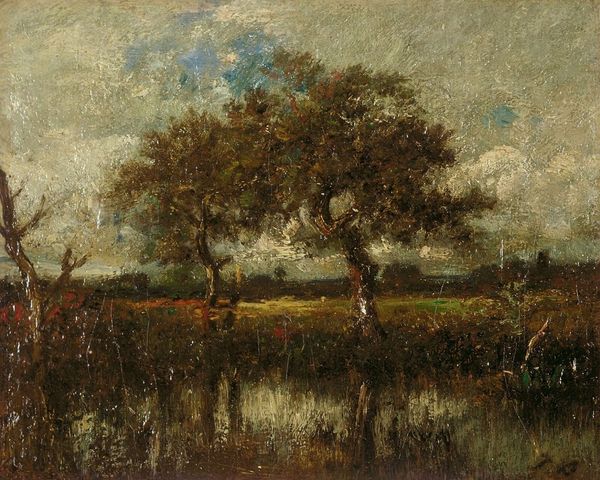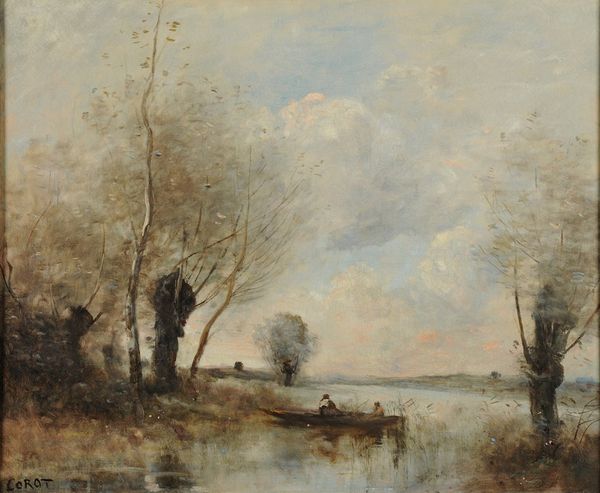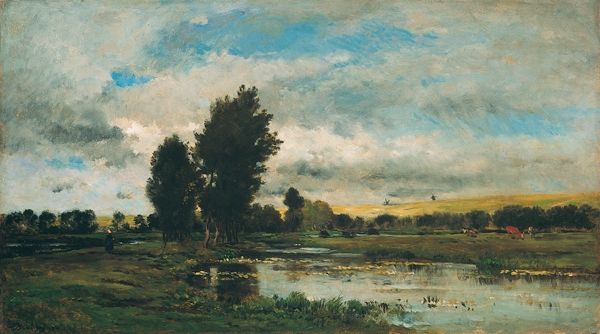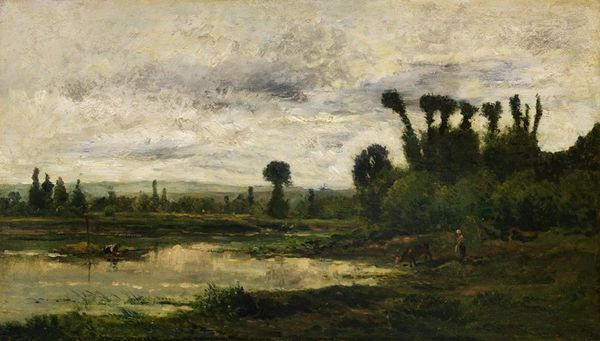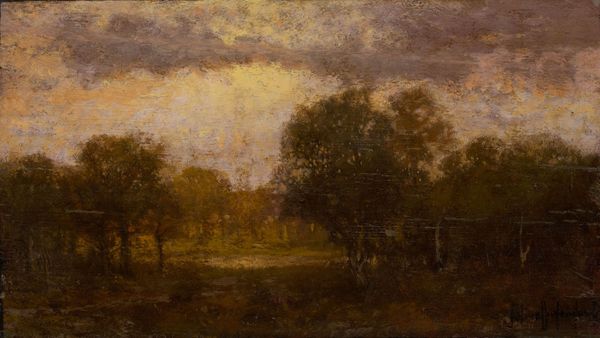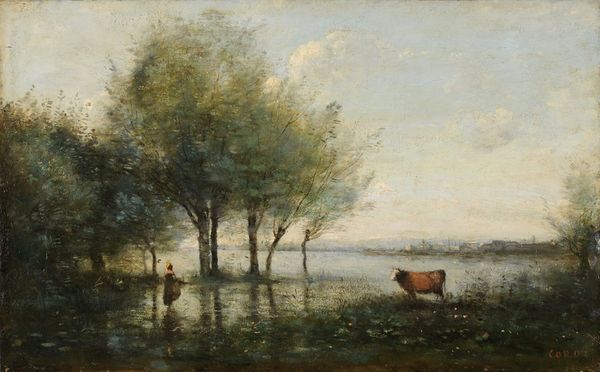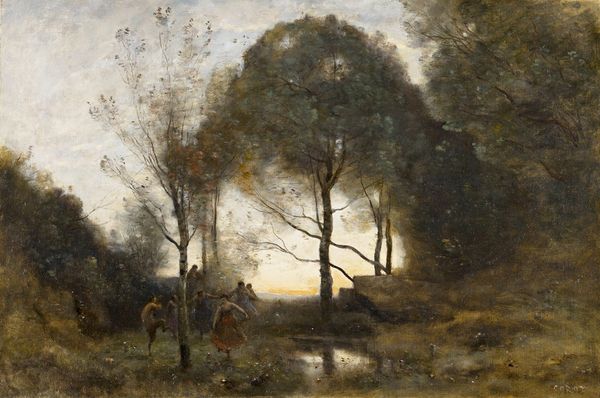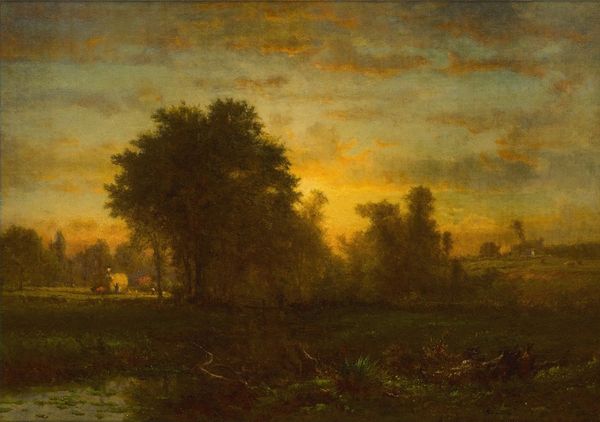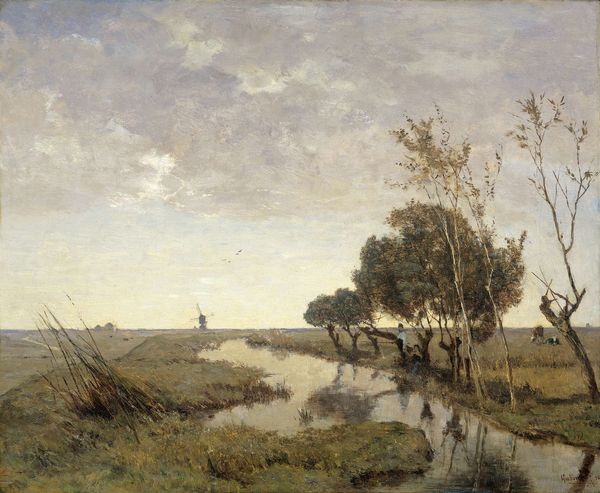
painting, plein-air, oil-paint, impasto, oil-on-canvas
#
painting
#
plein-air
#
oil-paint
#
landscape
#
impressionist landscape
#
possibly oil pastel
#
oil painting
#
impasto
#
romanticism
#
france
#
oil-on-canvas
#
realism
Dimensions: 8 x 10 in. (20.3 x 25.4 cm)
Copyright: Public Domain
Curator: This is an untitled landscape painting by Jules Dupré, circa 19th century. Dupré was a key figure in the French Barbizon School, known for his commitment to painting en plein air, directly from nature. Editor: It's incredibly atmospheric. The heavy impasto and muted colors create a palpable sense of dampness and quiet solitude. Curator: Absolutely. Dupré's choice of materials and technique aligns with a broader shift in art production. We're seeing a move away from idealized landscapes towards a focus on the actual, physical environment, shaped by weather, seasons, and of course, labor. Consider the artist hauling his supplies outdoors, engaging in physical work to capture a specific moment. Editor: It does raise questions about who had the time and resources for this type of "outdoor" work. This artistic choice isn’t free from socio-economic implications of that time. Curator: Precisely. And in terms of representation, think about what’s *not* shown here. Where are the figures that populate other landscape paintings from that era? The lack invites viewers to contemplate humanity's relationship with nature. Was Dupré exploring some romantic notion of an untainted or sublime scene? It is possible to interpret Dupré's landscapes within a feminist perspective, as expressions of autonomy and independence for the artists of the era. Editor: I think it’s more pertinent to consider that while these images appear ‘empty’ they depend on an intense exploitation of natural materials to make and manufacture paint. The oil-based paints themselves represent a significant industrial and resource extraction process, which in turn allowed for these quick 'impressions'. The visible brushstrokes display both speed and skill. Curator: That emphasis on material production forces us to recognize that art, even something seemingly 'natural', is always mediated. We might also see it as reflecting anxieties related to industrialization, this urge to reconnect with untouched nature. Editor: Maybe... But the industrial processes required for its manufacture cannot be ignored and neither can it simply be an aesthetic preference. Dupré’s engagement is bound by class and access. Curator: Yes, his choice of material, that connection to the land also becomes a loaded choice. What do you think? Editor: It’s all these tangible material layers and those quick impasto touches that leave a lasting impression.
Comments
No comments
Be the first to comment and join the conversation on the ultimate creative platform.
